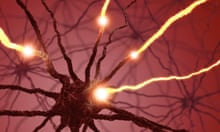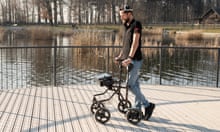When it comes to getting into the groove on the dancefloor, it really is all about the bass, researchers have found.
Scientists say when very low frequency (VLF) sound was introduced during a live electronic music event, gig-goers moved more even though they could not hear the frequencies.
“This is real world – real electronic music dance concert – validation that the bass really does make people dance more, and this isn’t just something that comes from our conscious awareness,” said Dr Daniel Cameron, a neuroscientist and first author of the work from McMaster University in Canada.
Cameron and colleagues note that previous studies suggested music that induces dance has more low frequency sound, and that low pitches help people to move in time to music.
However, it was not clear this impact of low frequencies would be seen in the real world, or when such sounds are not consciously detectable.
Writing in the journal Current Biology, the team report how they set up an electronic music concert by the Canadian duo Orphx at McMaster and asked attenders to wear motion-capture headbands before turning on and off specialised VLF speakers every 2.5 minutes during the 55-minute performance.
Results from 43 attenders who agreed to wear a headband revealed they moved 11.8% more, on average, when the VLF speakers were turned on. Cameron noted this meant people danced more vigorously, or with more exaggerated movements.
At the end of the concert, 51 attenders completed a questionnaire that asked whether they could feel the music in their body, and whether the bodily sensations affected their compulsion to move.
The results suggest the concertgoers experienced bodily sensations associated with the music, but that these feelings were not rated as stronger than at similar concerts – settings where VLF speakers are not typically used.
The team then conducted a further experiment in which 17 people were asked to distinguish between a pair of clips from the concert that were identical, and a pair that differed only by the presence or absence of the very low frequencies.
The results from 72 such trials revealed participants did no better than chance at telling the pairs apart.
Cameron said that backed up the conclusion that concert attenders were not consciously aware of any influence of the VLFs.
after newsletter promotion
“We’d lose all ecological validity if we just cranked the speakers, they become bone-rattling and everyone can tell ‘oh something different is really happening here’,” he said. “We didn’t want them to be aware of what we’re doing.”
The team say it is likely the VLFs are picked up by mechanoreceptors on the skin and in the body, as well as the vestibular system in the inner ear, which is linked to the sense of balance.
Dr Anne Keitel, lecturer in cognitive neuroscience at the University of Dundee who was not involved in the study, said that while the very low frequencies did not have a huge influence on attenders’ movements, the effect appeared to be remarkably consistent across individuals.
A future area of research, she said, would be to explore whether such sounds can be measured in people’s brain activity, to shed light on how they are being picked up and why they influence people’s movements.
Keitel added studies “in the wild” are extremely rare but important because they help unpick whether laboratory findings are relevant in real life.
“The study does a great job of monitoring individuals’ movements during a real concert, and questionnaires showed that participants thoroughly enjoyed themselves during the experience – something that usually doesn’t happen in the lab,” she said.










